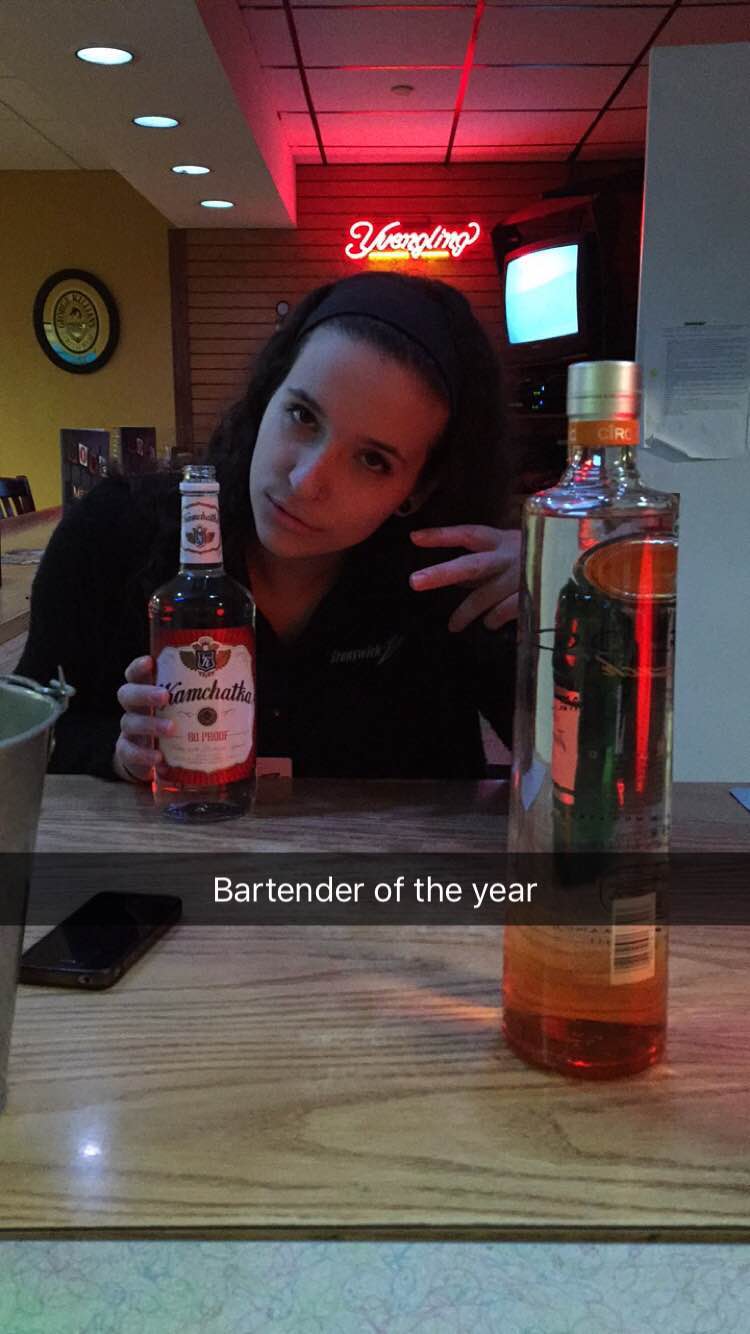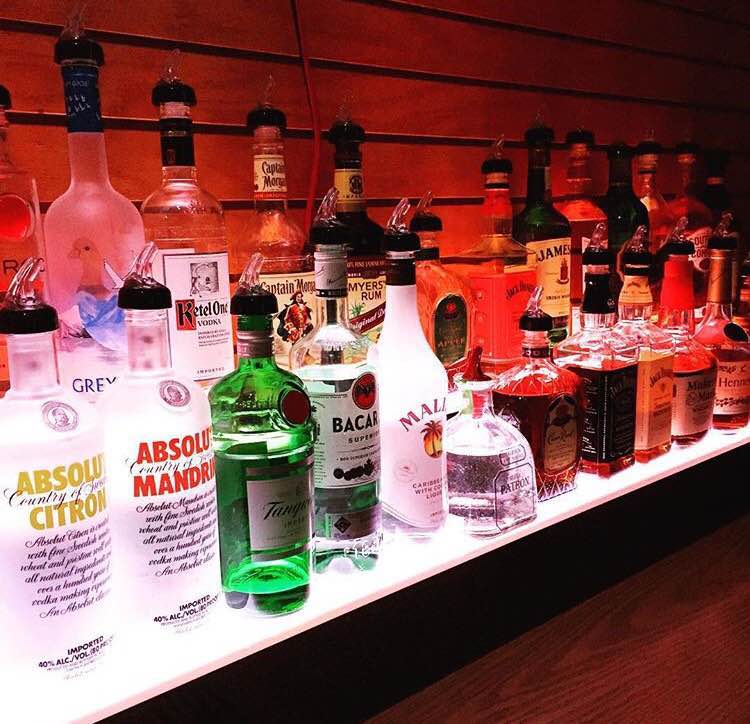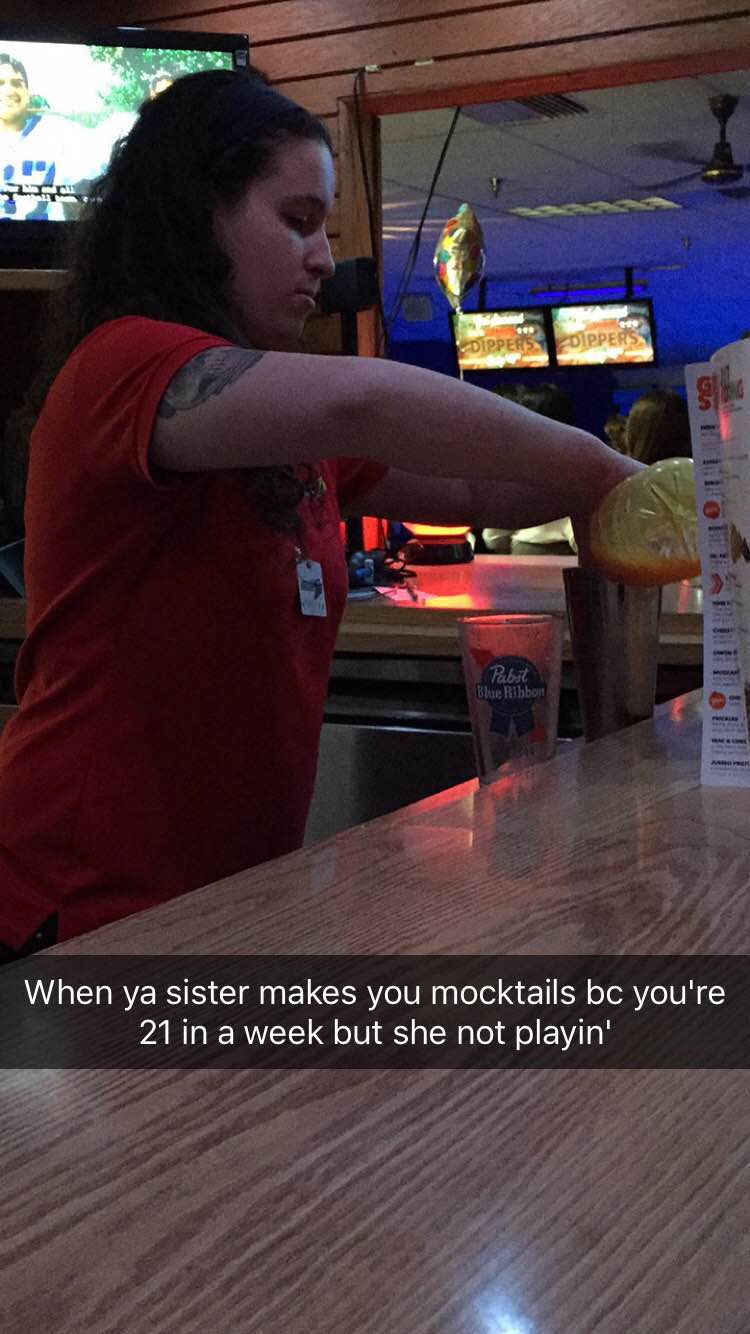Real Talk is our weekly series about the peaks, pitfalls, and perils of the food world. Every week, we’re taking you to the heart of food’s most glamorous (and difficult) projects with the help of our content partner MOO , whose products are all about making dream hustles into beautiful realities ( click here for 20% off your next order!)
From pop-up dinners to pop-tart marketing, hyper-local restaurants to global food empires, this is your peek behind the curtains of food & drink’s dreamiest initiatives and get—you guessed it—the real talk. This week, writer Taryn Pire takes us behind one of the more unusual bar settings in America: the bowling alley. From heavy drinkers to bowling leaguers, she occupies a unique vantage point for both people-watching and uncovering the psychology behind drinking.
_____________________
I’ll start off by saying that I’ve never seen The Big Lebowski in full—even after nine months of bartending at a bowling alley bar and countless self-declaredly clever men asking me for a “Caucasian” instead of a white Russian.
From what I’ve seen, the film captures an all-American essence of bowling that is quickly going extinct. Many corporate bowling alleys (including mine) are starting to look less like bowling alleys and more like nightclubs. Consequently, we get guests who are looking for a party.
My center has been patiently waiting on renovations for a little under a year now. While parts of the place could definitely use an update ASAP, I’m retrospectively glad that I got to sling beers in a laughably small but charming bar, full of regulars, leaguers, kind faces, and a few unruly strangers.
 They like me, they really like me!
They like me, they really like me!
I’ve found that many people thought less of me as a bartender the instant I told them where I worked. They think it’s all pitchers of Pabst for sweaty John Goodman lookalikes, and an occasional whiskey coke. While I have poured countless PBR pitchers in my time there, I was required to know much more than how to work a tap. I’ve had to make more cosmopolitans, specialty shots, and executive decisions there than at any other bar I’ve worked at—and by executive decisions, I mean cutting people off. You’d be shocked how many people try to get plastered (often with their own smuggled-in handles of liquor) at a bowling alley.
It’s safe to say that many people don’t know what to expect when they walk into my bar. At least twenty people have asked me, “well what do you guys like…have?” all while standing directly across from our small but well-rounded liquor shelf. A lot of my customers were not only shocked that I knew how to make a margarita, for instance, but that we even had tequila.
 My tool kit.
My tool kit.
Most nights were one of two extremes: absolutely dead by 10 p.m., or slammed until close at 2 a.m.
While my arsenal is more stacked than some people expected, the size and layout of the bar doesn’t lend itself to serious bar traffic. My liquor is on the opposite end of the room from the drink counter, the bar top is crooked (meaning that pitchers and glasses would often slide back to me after I put them down in front of guests), and the beer tray isn’t wide enough to catch the run off from the taps (in other words, beer everywhere).
This is one of the main reasons bartending at a bowling alley takes a lot of patience, and a bit of practiced humility. Most of the time, when all is said and done, these people aren’t there for you, they’re there for the bowling—I just happen to be the one serving them drinks. Sure, everyone wants to be friends with the bartender; but in this case, you’re likely an afterthought to many of your patrons. There are nights where it seems like not a single person takes me seriously as a bartender—and they tip accordingly.
Most people didn’t even sit at the bar. My particular bowling alley had a little service counter that wasn’t used by servers, but rather by guests; I used to call it my beer drive-thru. Guests often buy their drinks at the drive-thru in the two minutes they have before it’s their turn to bowl again, so they typically don’t have time to sit and chat.
Needless to say, bartending at my local bowling alley has its benefits, and sometimes it felt like it didn’t. But I learned to deal with adversity, bite my tongue, and make an impact on a guest—even in just thirty seconds between frames.
 A nice shot of my beer drive-thru by my under-age sister.
A nice shot of my beer drive-thru by my under-age sister.
There are, of course, a handful of exceptions; most of them are league bowlers. While corporate types tend to look down on leaguers, they save my tip bucket and my spirit week after week. Leaguers are something of a relic of bowling’s past, still in it for the wooden panel walls, the mysteriously stained carpeting, and the actual sport. They are the antithesis of new-age-bass-drop-dance-hall-cosmic-bowling nightlife; the people who threaten to take their once-a-week business elsewhere if they don’t get 42 cents discounted from their soda. Leaguers are misunderstood, and at times unfriendly; they want to know why they can’t smoke cigarettes in the bar like they used to in ’88.
They are also some of the most memorable drinkers I’ve ever served: the motorcycle rider who’d often stroll in the entrance holding a half-empty solo cup, the fugetaboutit Jersey Italian who moonlights as a Sinatra-style crooner, the loud but sharp redhead who always managed to get someone else to buy her Jameson neat.
Quirks aside, you have to give credit where credit is due. Leaguers walk through those doors every week, despite knowing that the place they’ve found solace in for years doesn’t want them there. They are subject to changing times, but stubbornly resist with everything they have until summer comes along, when they disappear until September. These are the people who actually sit at the bar—some of them to visit the bartender.












